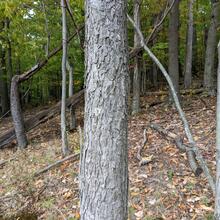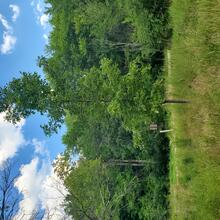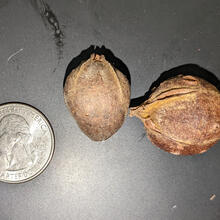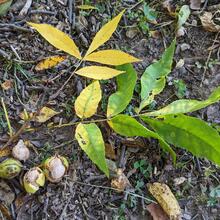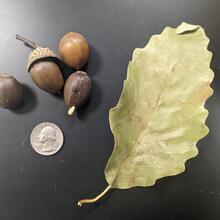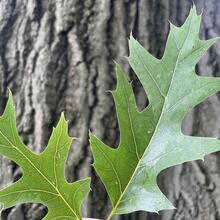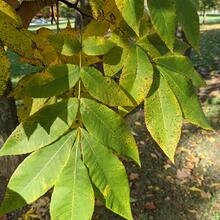Carya glabra
Juglandaceae
Named for nut shell which resembles pig snout. Prefers soil with humus/organic material. Produces large quantity of inedible nuts in fall. Structurally stable branches that withstand winds.
Summary
 Climate Tolerance
Climate Tolerance
Good
Wildlife Benefits
Nuts food source for mammals, gamebirds; moth/butterfly host; insect host, attracts woodpeckers
Pollination Type
Wind
Plant Hardiness Zones
4 to 9
# Butterfly/Moths that use as host
231
Bloom Time
Spring (Apr)
 Shade/Sun Tolerance
Shade/Sun Tolerance
Full Sun to Shade: Receives less than 2 to 6 or more hours of direct sunlight
 Maximum Height
Maximum Height
Medium (40-75 ft)
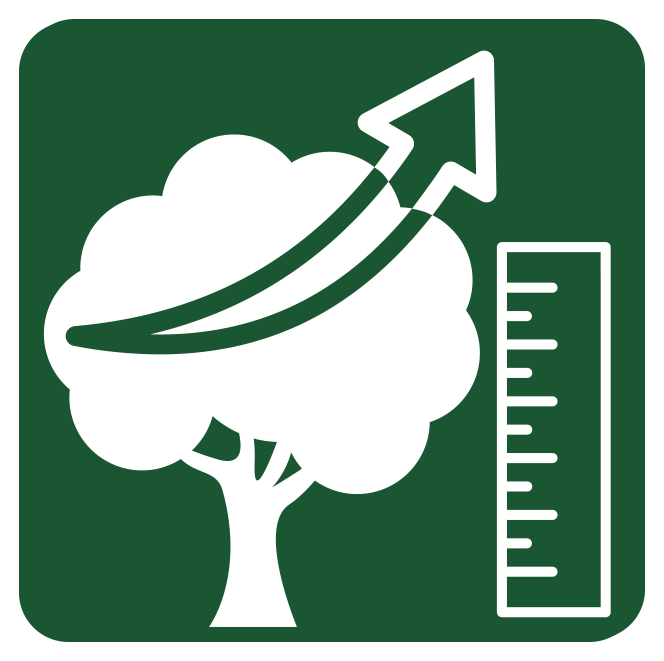 Growth Rate
Growth Rate
Slow: 1 ft or less per year
 Soil Type
Soil Type
Clay: Small sized particles. Long moisture retention and low nutrient availability.
Loam: Equal mix of clay, sand, and silt. Moderate moisture retention and high nutrient availability.
Sand: Large/coarse particles. Short moisture retention and low nutrient availability.
Silt: Medium sized particles. Moderate moisture retention and high nutrient availability.
 Soil Moisture Tolerance
Soil Moisture Tolerance
Dry - Moist: Soil can be dry for periods of time and can retain little moisture for periods of time
Root - Fungal Association
Ectomycorrhizae: Symbiotic relationship with fungi that exist on outside of plant root cells, facilitating nutrient uptake
Pest & Pathogen Risks
Very Low
 Urban Stress Tolerance
Urban Stress Tolerance
Medium: Tree can adapt to a few urban conditions and will generally grow well
Drought Tolerance
Tolerant: Tree will not become stressed during periods of drought
Coefficient of Conservatism
5
Native Status
OH-Native: Species is native to Ohio
NatureServe G-rank
G5
Plant Community Type
- Beech Mixed: Occasional
- Oak Mixed: Common
- Alluvial: Rare
- Red Maple Mixed: Rare
- Ruderal: Rare
Bloom Color
Brown
Green
Yellow
Form
Tree
 Lifespan
Lifespan
Medium: 100-250 years
Soil pH
Circumneutral (pH 6.8-7.2)
Wetland Indicator Status
FACU: Facultative Upland, usually occurs in non-wetlands, but may occur in wetlands
Soil Compaction Tolerance
Sensitive: Tree will become stressed from soil being compacted
Heat Tolerance
Tolerant: Tree will not become stressed for increased temperature due to urban heat island effects
Salt Tolerant
Sensitive: Intolerant to either aerial salt spray and/or salt present in soil
Native County Status
Cuyahoga
Geauga
Lake
Lorain
Medina
Portage
Summit
IUCN Red List Assessment
Least Concern

